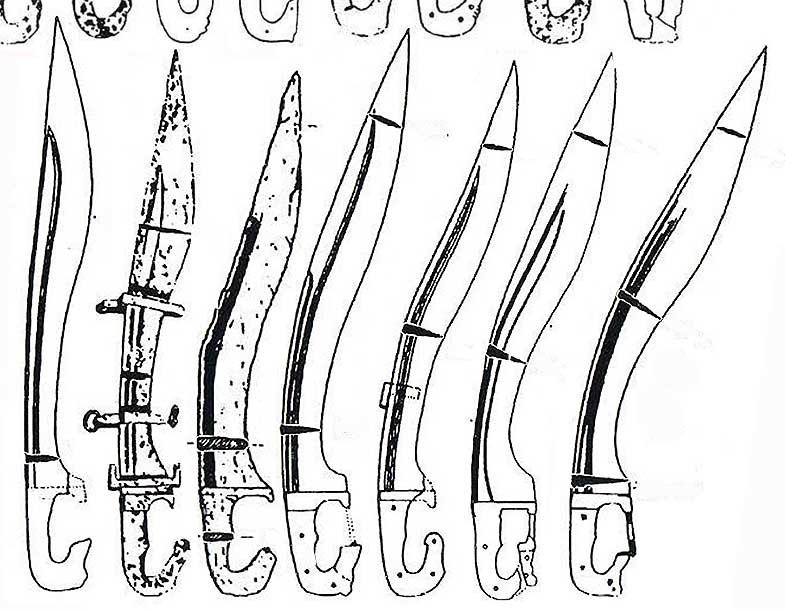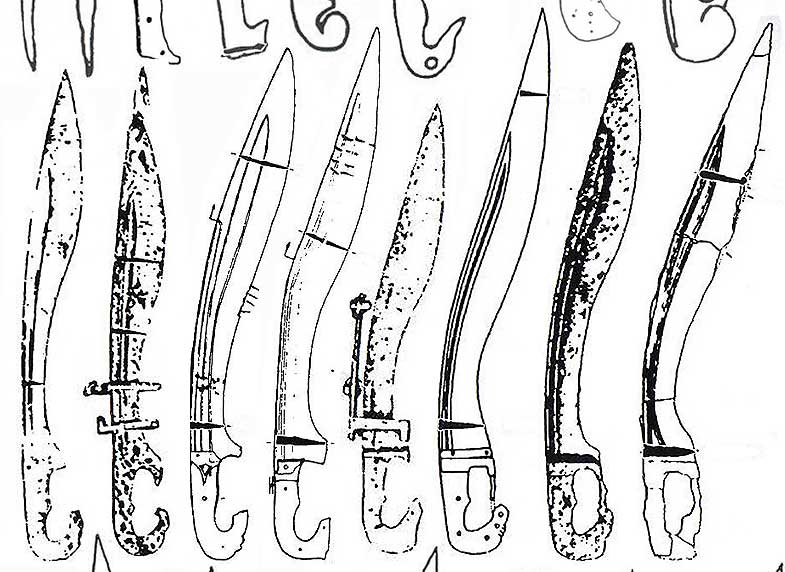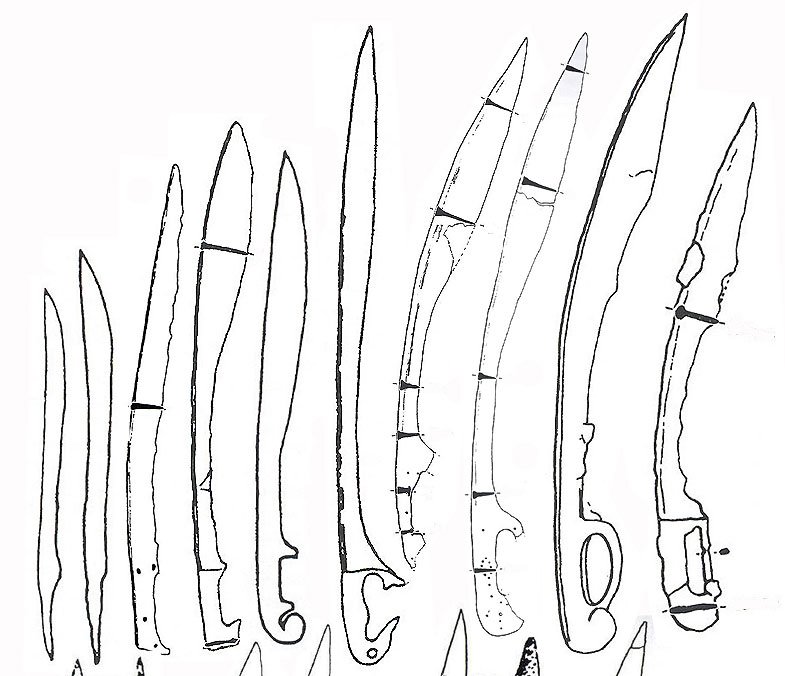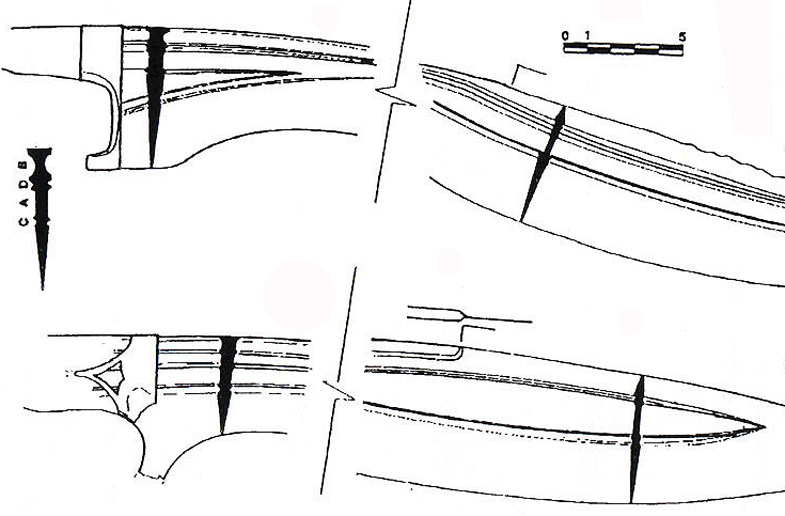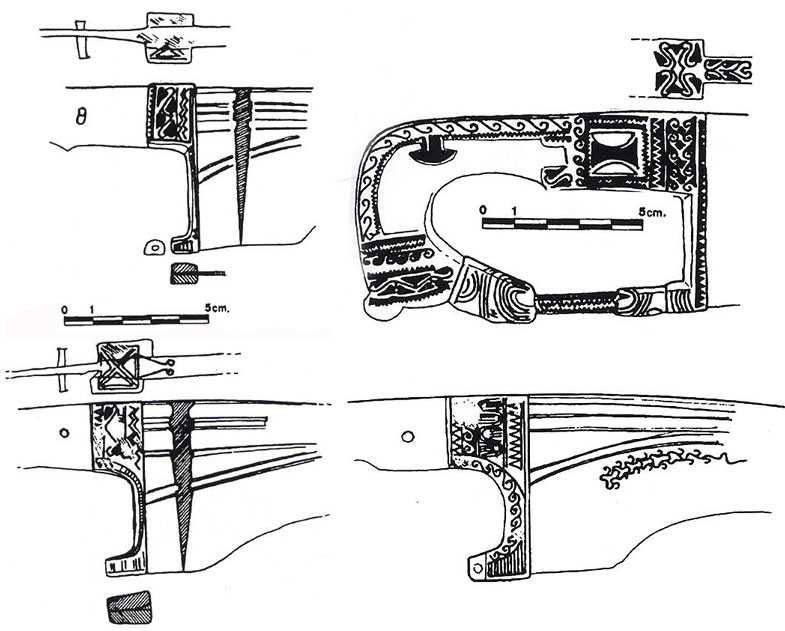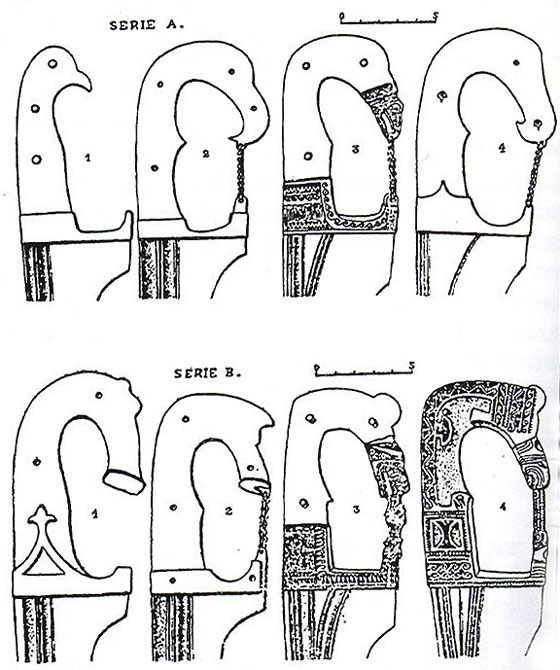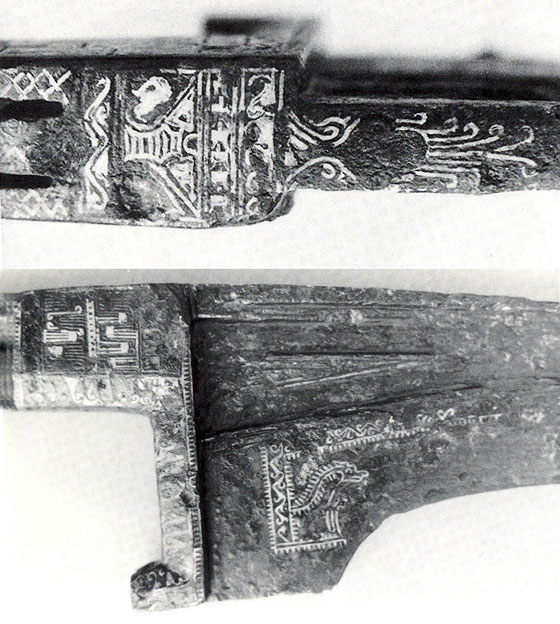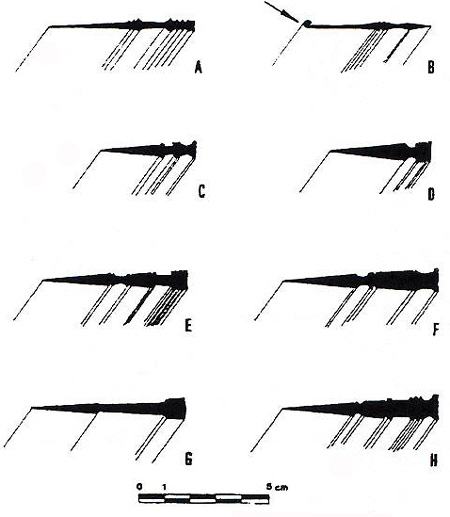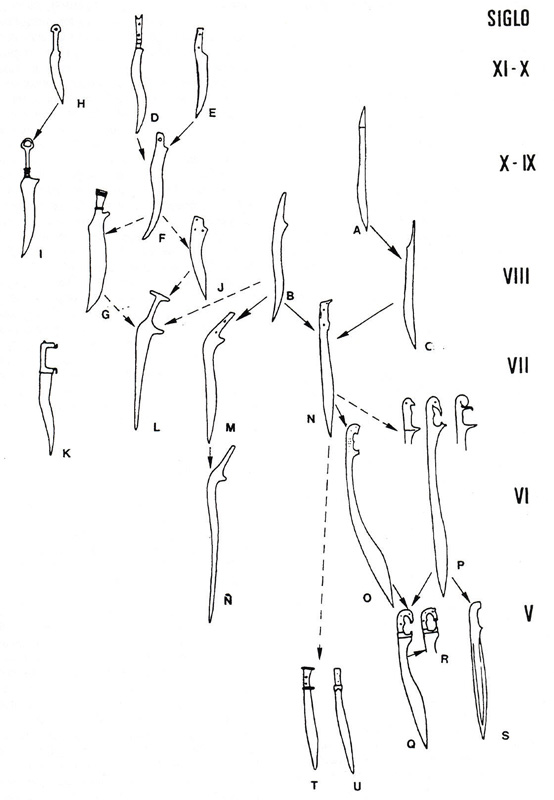[This thread was inspired by the landmark work of Fernando Quesada Sanz entitled: “El armamento ibérico: Estudio tipológico,geográfico, funcional, social y simbólico de las armas en la cultura ibérica (siglos VI–I a.C. 2 vols.) As the title suggests F. Quesada Sanz illuminates the typology, geographical distribution, function, social and symbolic aspects of Iberian weapon systems within Iberian culture. It was the material on the Falcata that fascinated me. Because this important work is so difficult to find, I thought I would share a series of montages of some of the graphic information. It is imperative that the reader not attempt to draw any conclusions whatsoever about the historical or forging traditions from the grouping of sword forms in these montages. They are mixtures of forms from many different discussions throughout the work. I have simply grouped them into a condensed form based on similar form to save space. These groupings are not meant to convey any information other than the varieties of design. I encourage anyone who would like to understand the historical and geographical relationships to get access to this landmark work and examine the many fine figures within their context.
And excellent summary and review of the complete work can be found here: http://uam.academia.edu/FernandoQuesadaSanz/Books ]
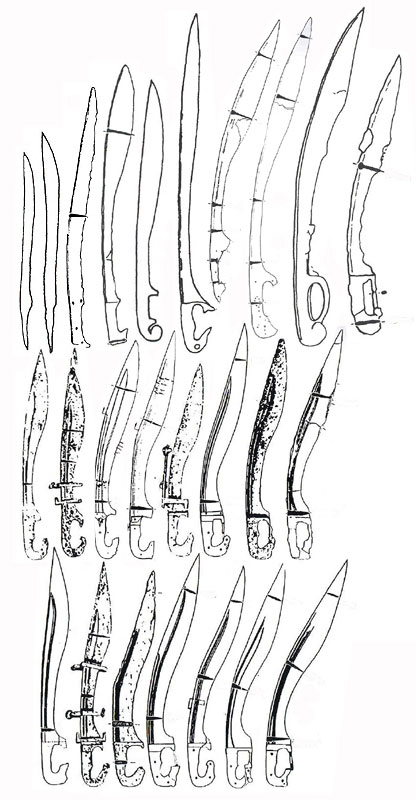
Photoshop Montage of Most of the Falcata Drawings from “El Armamento Iberico” by Fernando Quesada Sanz

Photoshop Montage of Many Different Period Depictions of the Kopis in Action
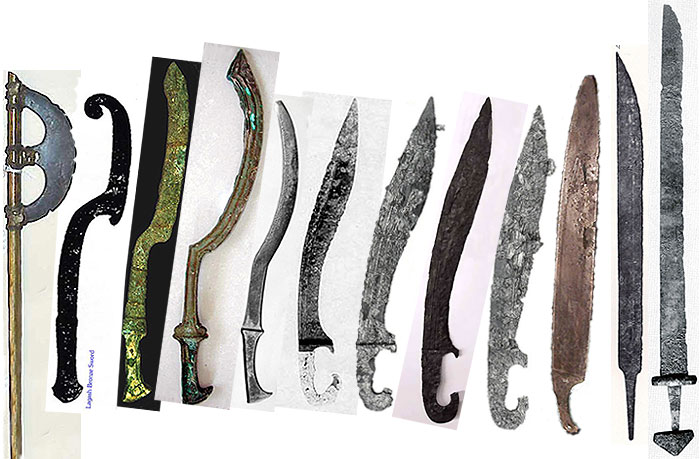
Possible Line of Development From Pole Axe to Khopesh to Kopis to Seax to Viking
